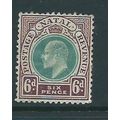Damascus, Syria - Omayyad Mosque - real photo postcard - Palmyra stamps c.1950s
- Condition : Used
- Dispatch : 2 Days
- Brand : None
- ID# : 184100987
- Quantity : 1 item
- Views : 235
- Location : United Kingdom

- Seller : justthebook (+1713)
- Barcode : None
- Start : Thu 15 Aug 2019 11:40:47 (EDT)
- Close : Run Until Sold
- Remain : Run Until Sold
Checks/Cheques
 for 1 item(s) edit
for 1 item(s) edit
Shipping Calculator
More Listings from This Seller view all
Seller's Description
- Postcard
- Picture / Image: Damascus - interior of the Omayyad Mosque / Damas - Interieur de la Mosquee de Omayades - real photo type
- Publisher: Editions Gulef
- Postally used: yes
- Stamp: Republic of Syria 1952 15p purple Palmyre stamp (probably SG515)
- Postmark(s): illeg cds
- Sent to: Whan Cross, Chalfont St. Peter, Bucks., England
- Notes / condition:
- Postcard
Please ask if you need any other information and I will do the best I can to answer.
Image may be low res for illustrative purposes - if you need a higher definition image then please contact me and I may be able to send one. No cards have been trimmed (unless stated).
------------------------------------------------
Postage & Packing:
Postage and packing charge should be showing for your location (contact if not sure).
No additional charges for more than one postcard. You can buy as many postcards from me as you like and you will just pay the fee above once. Please wait for combined invoice. (If buying postcards with other things such as books, please contact or wait for invoice before paying).
Payment Methods:
UK - PayPal, Cheque (from UK bank) or postal order
Outside UK: PayPal ONLY (unless otherwise stated) please. NO non-UK currency checks or money orders (sorry).
NOTE: All postcards are sent in brand new stiffened envelopes which I have bought for the task. These are specially made to protect postcards and you may be able to re-use them. In addition there are other costs to sending so the above charge is not just for the stamp!
I will give a full refund if you are not fully satisfied with the postcard.
----------------------------------------------
Text from the free encyclopedia WIKIPEDIA may appear below to give a little background information (internal links may not work) :
*************
The Umayyad Mosque, also known as the Great Mosque of Damascus (Arabic: ???? ??? ???? ???????, Romanization Gami' Bani 'Umayya al-Kabir), located in the old city of Damascus, is one of the largest and oldest mosques in the world. It is considered by some Muslims to be the fourth-holiest place in Islam.[1][2]
After the Arab conquest of Damascus in 634, the mosque was built on the site of a Christian basilica dedicated to John the Baptist(Yahya). The mosque holds a shrine which today may still contain the head of John the Baptist[citation needed], honored as a prophetby both Christians and Muslims alike, and is believed to be the place where Isa (Jesus) will return at the End of Days. The tomb of Saladin stands in a small garden adjoining the north wall of the mosque.
Damascus was the capital of the Aramaean state Aram-Damascus during the Iron Age. The Arameans of western Syria followed the cult of Hadad-Ramman, the god of thunderstorms and rain, and erected a temple dedicated to him at the site of the present-day Umayyad Mosque. It is not known exactly how the temple looked, but it is believed to have followed the traditional Semitic-Canaanite architectural form, resembling the Temple of Jerusalem. The site likely consisted of a walled courtyard, a small chamber for worship, and a tower-like structure typically symbolizing the ""high place"" of storm gods, in this case Hadad. One stone remains from the Aramaean temple, dated to the rule of King Hazael, has survived and is currently on display in the National Museum of Damascus.[3]
The Temple of Hadad-Ramman continued to serve a central role in the city, and when the Romans conquered Damascus in 64 CE they assimilated Hadad with their own god of thunder, Jupiter.[4] Thus, they engaged in a project to reconfigure and expand the temple under the direction of Damascus-born architect Apollodorus, who created and executed the new design.[5] The symmetry and dimensions of the new Greco-Roman Temple of Jupiter impressed the local population. With the exception of the much increased scale of the building, most of its original Semitic design was preserved; the walled courtyard was largely left intact. In the center of the courtyard stood the cella, an image of the god which followers would honor.[4] There was one tower at each of courtyard's four corners. The towers were used for rituals in line with ancient Semitic religious traditions where sacrifices were made on high places.[6]
The sheer size of the compound suggests that the religious hierarchy of the temple, sponsored by the Romans, wielded major influence in the city's affairs.[7] The Roman temple, which later became the center of the Imperial cult of Jupiter, was intended to serve as a response to the Hebrew temple in Jerusalem. Instead of being dedicated to one god, the Roman temple combined(interpretatio graeca) all of the gods affiliated with heaven that were worshipped in the region such as Hadad, Ba'al-Shamin and Dushara, into the ""supreme-heavenly-astral Zeus"".[8] The Temple of Jupiter would attain further additions during the early period of Roman rule of the city, mostly initiated by high priests who collected contributions from the wealthy citizens of Damascus.[7] The eastern gateway of the courtyard was expanded during the reign of Septimius Severus (r. 193–211 CE).[9]
By the 4th century CE, the temple was especially renowned for its size and beauty. It was separated from the city by two sets of walls. The first, wider wall spanned a wide area that included a market, and the second wall surrounded the actual sanctuary of Jupiter. It was the largest temple in Roman Syria.[10] Towards the end of the 4th century, in 391, the Temple of Jupiter was converted into the Cathedral of Saint John by the Christian emperor Theodosius I (r. 379–395). During its transformation into a Christian cathedral it was not immediately dedicated to John the Baptist; this was a later association, which came about in the 6th century. Legend had it that Saint John's head was buried there.[11] It served as the seat of the Bishop of Damascus, who ranked second within the Patriarchate of Antioch after the patriarch himself.[12]
Damascus was besieged and captured by Muslim Arab forces led by Khalid ibn al-Walid in 634. Decades later, the Islamic Caliphate came under the rule of the Umayyad dynasty, which chose Damascus to be the administrative capital of the Muslim world. The sixth Umayyad caliph, al-Walid I (r. 705–715), commissioned the construction of a mosque on the site of the Byzantine cathedral in 706.[13] Prior to this, the cathedral was still in use by the local Christians, but a prayer room (musalla) for Muslims had been constructed on the southeastern part of the building. Al-Walid, who personally supervised the project, had most of the cathedral, including the musalla, demolished. The construction of the mosque completely altered the layout of the building. The new house of worship was meant to serve as a large congregational mosque for the citizens of Damascus and as a tribute to the city. In response to Christian protest at the move, al-Walid ordered all the other confiscated churches in the city to be returned to the Christians as compensation. The mosque was completed in 715, shortly after the al-Walid's death, by his successor, Sulayman ibn Abd al-Malik (r. 715–717).[14][15]
According to 10th-century Persian historian Ibn al-Faqih, somewhere between 600,000 and 1,000,000 dinars were spent on the project. Coptic craftsmen as well as Persian, Indian, Greek and Moroccan laborers provided the bulk of the labor force which consisted of 12,000 people.[14][16] Ibn al-Faqih also relays the story that during the construction of the mosque, workers found a cave-chapel which had a box containing the head of St. John the Baptist, or Ya?ya ibn Zakariya in Islam. Upon learning of that and examining it, al-Walid I ordered the head buried under a specific pillar in the mosque that was later inlaid with marble.[17]
Listing Information
| Listing Type | Gallery Listing |
| Listing ID# | 184100987 |
| Start Time | Thu 15 Aug 2019 11:40:47 (EDT) |
| Close Time | Run Until Sold |
| Starting Bid | Fixed Price (no bidding) |
| Item Condition | Used |
| Bids | 0 |
| Views | 235 |
| Dispatch Time | 2 Days |
| Quantity | 1 |
| Location | United Kingdom |
| Auto Extend | No |





















